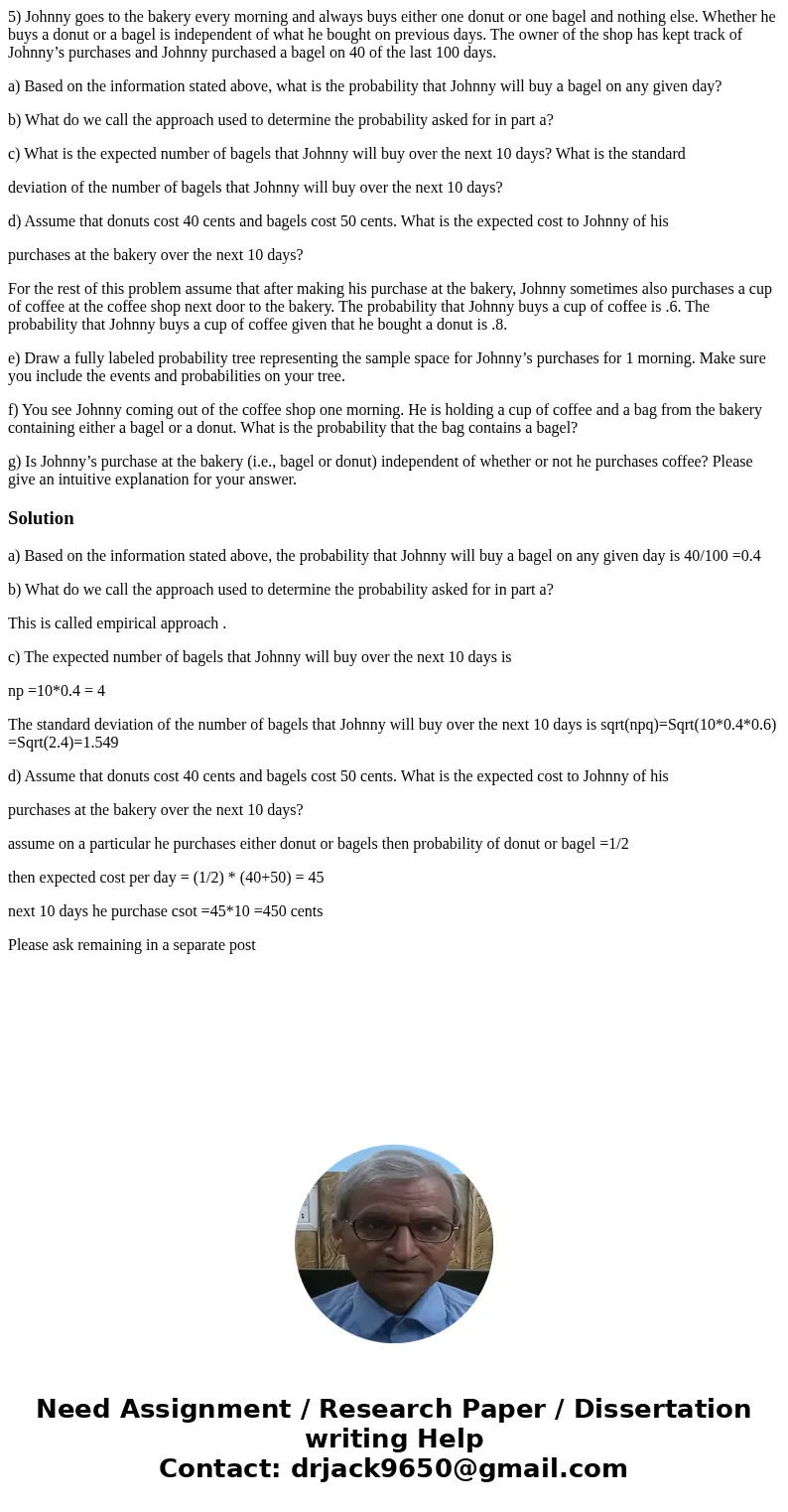5 Johnny goes to the bakery every morning and always buys ei
5) Johnny goes to the bakery every morning and always buys either one donut or one bagel and nothing else. Whether he buys a donut or a bagel is independent of what he bought on previous days. The owner of the shop has kept track of Johnny’s purchases and Johnny purchased a bagel on 40 of the last 100 days.
a) Based on the information stated above, what is the probability that Johnny will buy a bagel on any given day?
b) What do we call the approach used to determine the probability asked for in part a?
c) What is the expected number of bagels that Johnny will buy over the next 10 days? What is the standard
deviation of the number of bagels that Johnny will buy over the next 10 days?
d) Assume that donuts cost 40 cents and bagels cost 50 cents. What is the expected cost to Johnny of his
purchases at the bakery over the next 10 days?
For the rest of this problem assume that after making his purchase at the bakery, Johnny sometimes also purchases a cup of coffee at the coffee shop next door to the bakery. The probability that Johnny buys a cup of coffee is .6. The probability that Johnny buys a cup of coffee given that he bought a donut is .8.
e) Draw a fully labeled probability tree representing the sample space for Johnny’s purchases for 1 morning. Make sure you include the events and probabilities on your tree.
f) You see Johnny coming out of the coffee shop one morning. He is holding a cup of coffee and a bag from the bakery containing either a bagel or a donut. What is the probability that the bag contains a bagel?
g) Is Johnny’s purchase at the bakery (i.e., bagel or donut) independent of whether or not he purchases coffee? Please give an intuitive explanation for your answer.
Solution
a) Based on the information stated above, the probability that Johnny will buy a bagel on any given day is 40/100 =0.4
b) What do we call the approach used to determine the probability asked for in part a?
This is called empirical approach .
c) The expected number of bagels that Johnny will buy over the next 10 days is
np =10*0.4 = 4
The standard deviation of the number of bagels that Johnny will buy over the next 10 days is sqrt(npq)=Sqrt(10*0.4*0.6) =Sqrt(2.4)=1.549
d) Assume that donuts cost 40 cents and bagels cost 50 cents. What is the expected cost to Johnny of his
purchases at the bakery over the next 10 days?
assume on a particular he purchases either donut or bagels then probability of donut or bagel =1/2
then expected cost per day = (1/2) * (40+50) = 45
next 10 days he purchase csot =45*10 =450 cents
Please ask remaining in a separate post

 Homework Sourse
Homework Sourse